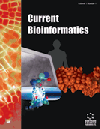-
s Inter-Species/Host-Parasite Protein Interaction Predictions Reviewed
- Source: Current Bioinformatics, Volume 13, Issue 4, Aug 2018, p. 396 - 406
-
- 01 Aug 2018
Abstract
Background: Host-parasite protein interactions (HPPI) are those interactions occurring between a parasite and its host. Host-parasite protein interaction enhances the understanding of how parasite can infect its host. The interaction plays an important role in initiating infections, although it is not all host-parasite interactions that result in infection. Identifying the protein-protein interactions (PPIs) that allow a parasite to infect its host has a lot do in discovering possible drug targets. Such PPIs, when altered, would prevent the host from being infected by the parasite and in some cases, result in the parasite inability to complete specific stages of its life cycle and invariably lead to the death of such parasite. It therefore becomes important to understand the workings of host-parasite interactions which are the major causes of most infectious diseases. Objective: Many studies have been conducted in literature to predict HPPI, mostly using computational methods with few experimental methods. Computational method has proved to be faster and more efficient in manipulating and analyzing real life data. This study looks at various computational methods used in literature for host-parasite/inter-species protein-protein interaction predictions with the hope of getting a better insight into computational methods used and identify whether machine learning approaches have been extensively used for the same purpose. Methods: The various methods involved in host-parasite protein interactions were reviewed with their individual strengths. Tabulations of studies that carried out host-parasite/inter-species protein interaction predictions were performed, analyzing their predictive methods, filters used, potential protein-protein interactions discovered in those studies and various validation measurements used as the case may be. The commonly used measurement indexes for such studies were highlighted displaying the various formulas. Finally, future prospects of studies specific to human-plasmodium falciparum PPI predictions were proposed. Result: We discovered that quite a few studies reviewed implemented machine learning approach for HPPI predictions when compared with methods such as sequence homology search and protein structure and domain-motif. The key challenge well noted in HPPI predictions is getting relevant information. Conclusion: This review presents useful knowledge and future directions on the subject matter.


